Abstract
A mouse strain (CB6) that is highly susceptible to Mycobacterium lepraemurium was infected with 10(8) bacilli into the hind footpad. These mice developed cell-mediated immunity to M. lepraemurium, as expressed by the development of a granulomatous lesion at the site of inoculation in normal but not in T-lymphocyte-depleted mice, a proliferative response in the paracortical zone of the draining lymph node, delayed-type hypersensitivity to a sonic extract of M. lepraemurium, and immunopotentiation of the delayed hypersensitivity response to sheep erythrocytes. Resistance to a second challenge infection with M. lepraemurium was not demonstrated.
Full text
PDF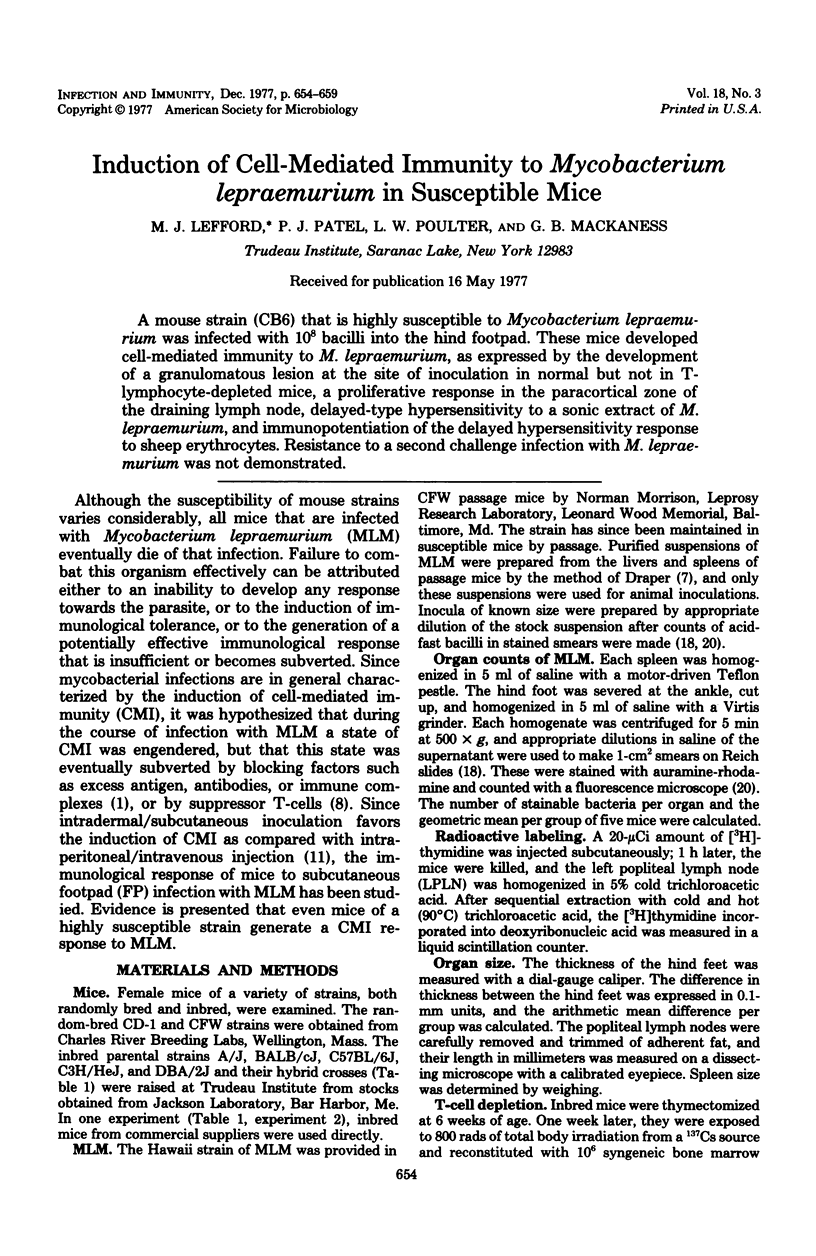
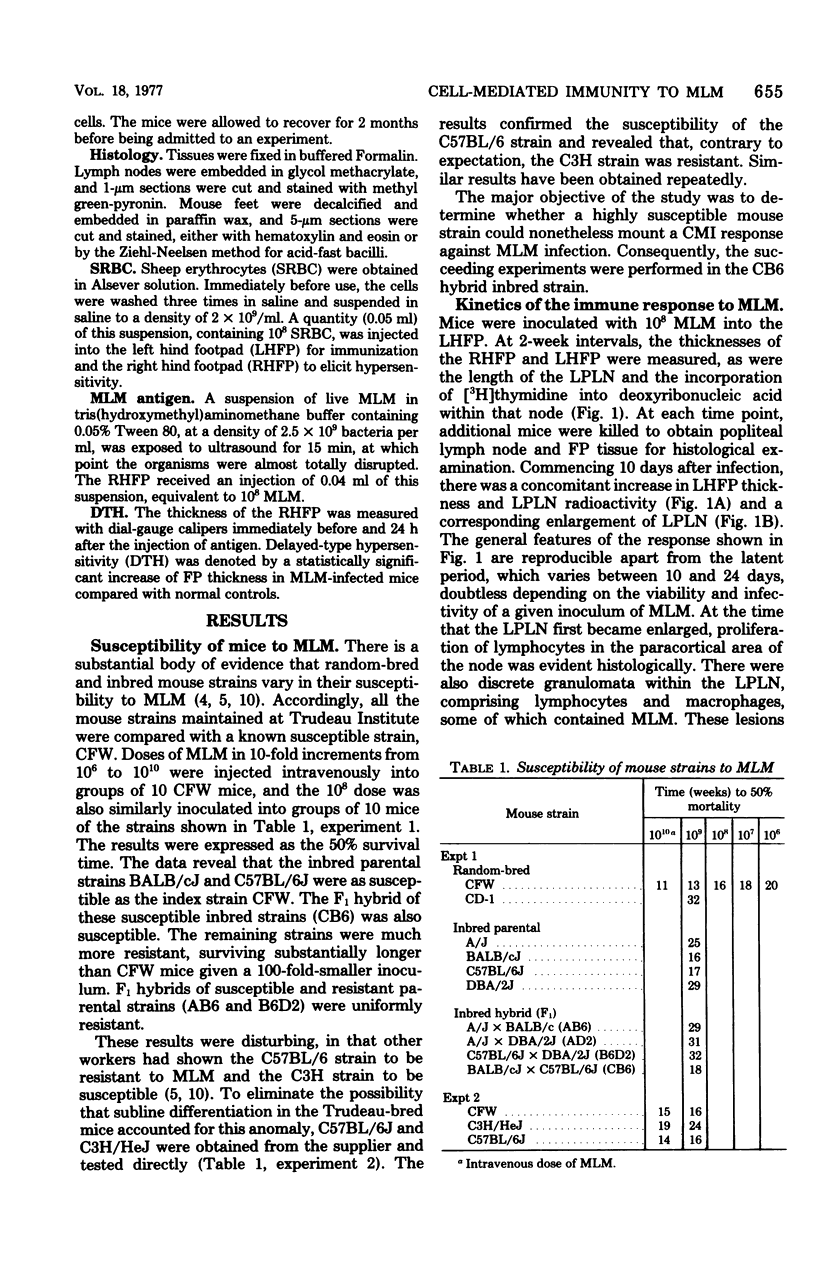
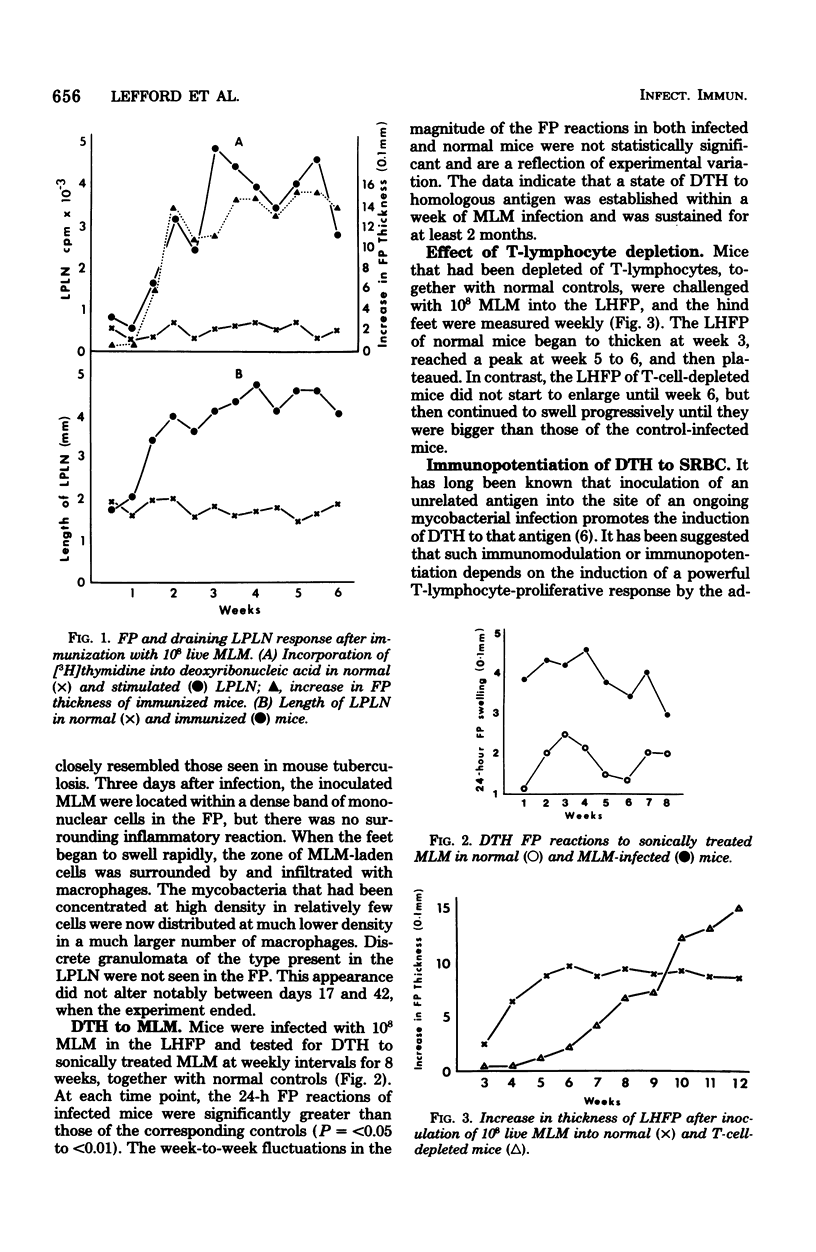
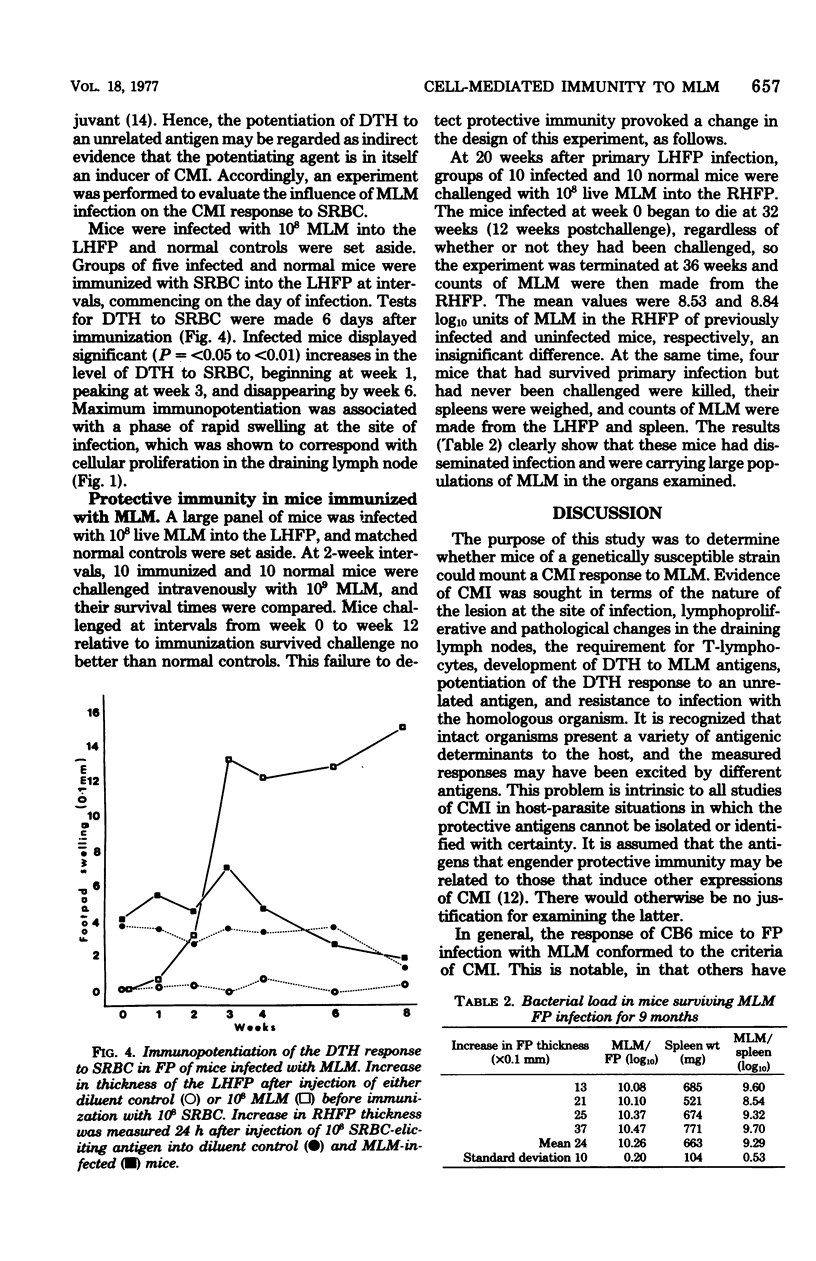
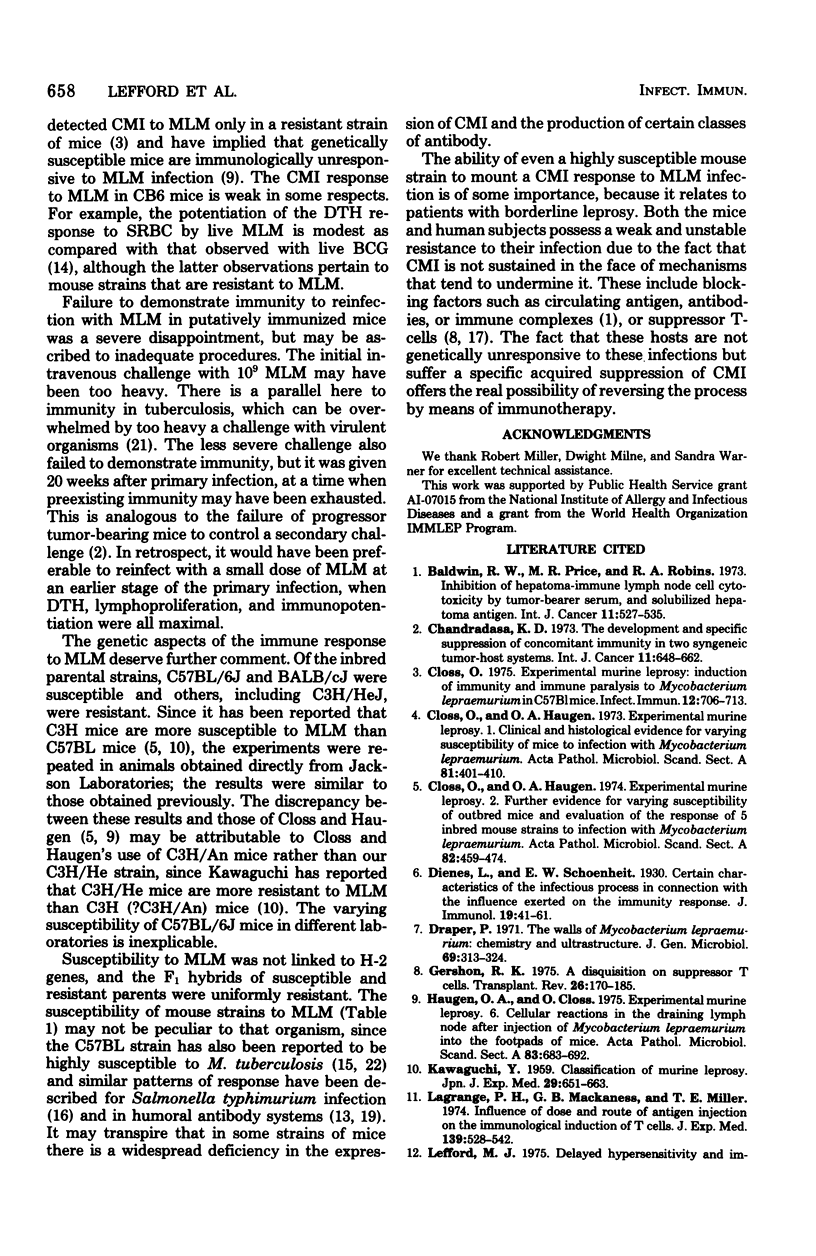
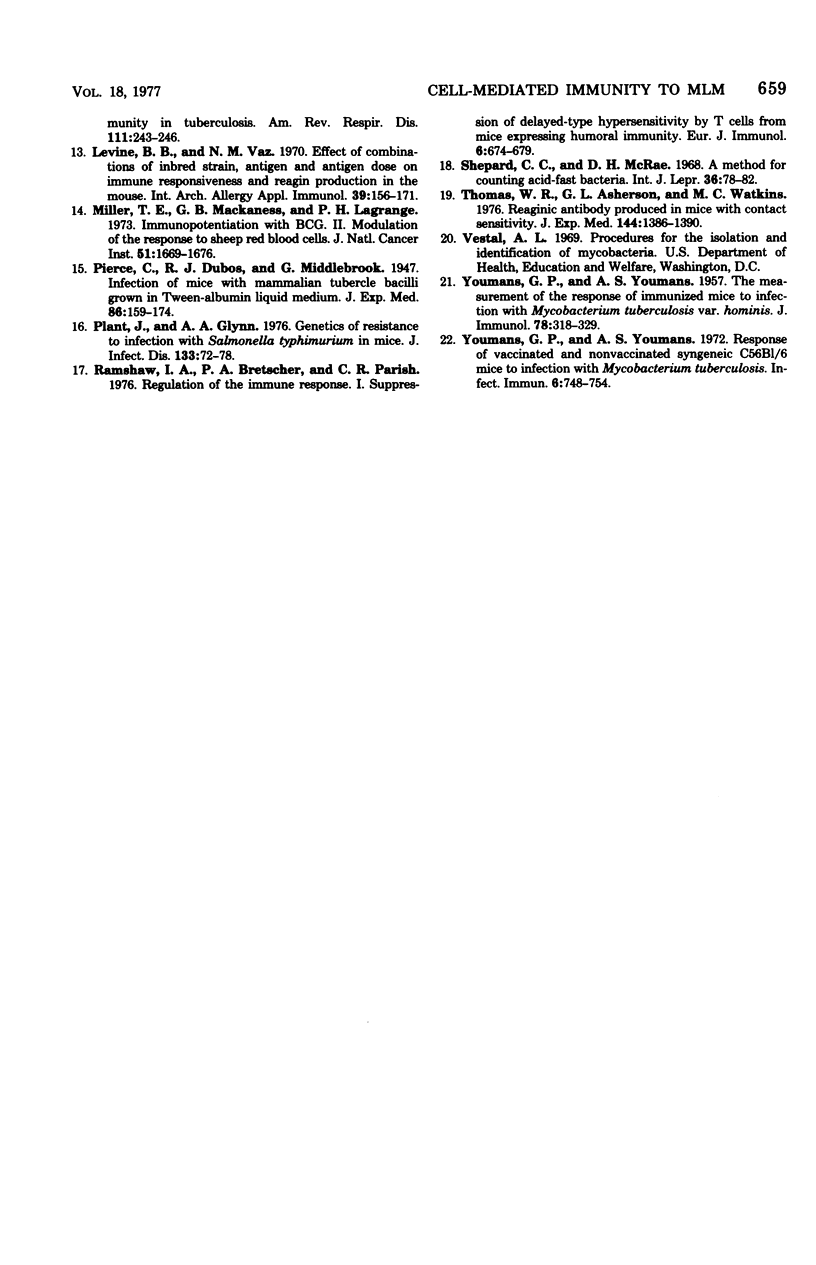
Selected References
These references are in PubMed. This may not be the complete list of references from this article.
- Baldwin R. W., Price M. R., Robins R. A. Inhibition of hepatoma-immune lymph-node cell cytotoxicity by tumour-bearer serum, and solubilized hepatoma antigen. Int J Cancer. 1973 May;11(3):527–535. doi: 10.1002/ijc.2910110304. [DOI] [PubMed] [Google Scholar]
- Chandradasa K. D. The development and specific suppression of concomitant immunity in two syngeneic tumour-host systems. Int J Cancer. 1973 May;11(3):648–662. doi: 10.1002/ijc.2910110316. [DOI] [PubMed] [Google Scholar]
- Closs O. Experimental murine leprosy: induction of immunity and immune paralysis to Mycobacterium lepraemurium in C57BL mice. Infect Immun. 1975 Oct;12(4):706–713. doi: 10.1128/iai.12.4.706-713.1975. [DOI] [PMC free article] [PubMed] [Google Scholar]
- Closs O., Haugen O. A. Experimental murine leprosy. 2. Further evidence for varying susceptibility of outbred mice and evaluation of the response of 5 inbred mouse strains to infection with Mycobacterium lepraemurium. Acta Pathol Microbiol Scand A. 1974 Jul;82(4):459–474. [PubMed] [Google Scholar]
- Closs O., Haugen O. A. Experimental murine leprosy. I. Clinical histological evidence for varying susceptibility of mice to infection with Mycobacterium lepraemurium. Acta Pathol Microbiol Scand A. 1973 Jul;81(4):401–410. [PubMed] [Google Scholar]
- Draper P. The walls of Mycobacterium lepraemurium: chemistry and ultrastructure. J Gen Microbiol. 1971 Dec;69(3):313–324. doi: 10.1099/00221287-69-3-313. [DOI] [PubMed] [Google Scholar]
- Gershon R. K. A disquisition on suppressor T cells. Transplant Rev. 1975;26:170–185. doi: 10.1111/j.1600-065x.1975.tb00179.x. [DOI] [PubMed] [Google Scholar]
- Haugen O. A., Closs O. Experimental murine leprosy. 6. Cellular reactions in the draining lymph node after injection of Mycobacterium lepraemurium into the foot-pads of mice. Acta Pathol Microbiol Scand A. 1975 Nov;83(6):683–692. doi: 10.1111/j.1699-0463.1975.tb01398.x. [DOI] [PubMed] [Google Scholar]
- KAWAGUCHI Y. Classification of mouse leprosy. Jpn J Exp Med. 1959 Dec;29:651–663. [PubMed] [Google Scholar]
- Lagrange P. H., Mackaness G. B., Miller T. E. Influence of dose and route of antigen injection on the immunological induction of T cells. J Exp Med. 1974 Mar 1;139(3):528–542. doi: 10.1084/jem.139.3.528. [DOI] [PMC free article] [PubMed] [Google Scholar]
- Levine B. B., Vaz N. M. Effect of combinations of inbred strain, antigen, and antigen dose on immune responsiveness and reagin production in the mouse. A potential mouse model for immune aspects of human atopic allergy. Int Arch Allergy Appl Immunol. 1970;39(2-3):156–171. doi: 10.1159/000230343. [DOI] [PubMed] [Google Scholar]
- Miller T. E., Mackaness G. B., Lagrange P. H. Immunopotentiation with BCG. II. Modulation of the response to sheep red blood cells. J Natl Cancer Inst. 1973 Nov;51(5):1669–1676. doi: 10.1093/jnci/51.5.1669. [DOI] [PubMed] [Google Scholar]
- Plant J., Glynn A. A. Genetics of resistance to infection with Salmonella typhimurium in mice. J Infect Dis. 1976 Jan;133(1):72–78. doi: 10.1093/infdis/133.1.72. [DOI] [PubMed] [Google Scholar]
- Ramshaw I. A., Bretscher P. A., Parish C. R. Regulation of the immune response. I. Suppression of delayed-type hypersensitivity by T cells from mice expressing humoral immunity. Eur J Immunol. 1976 Oct;6(10):674–679. doi: 10.1002/eji.1830061003. [DOI] [PubMed] [Google Scholar]
- Shepard C. C., McRae D. H. A method for counting acid-fast bacteria. Int J Lepr Other Mycobact Dis. 1968 Jan-Mar;36(1):78–82. [PubMed] [Google Scholar]
- Thomas W. R., Asherson G. L., Watkins M. C. Reaginic antibody produced in mice with contact sensitivity. J Exp Med. 1976 Nov 2;144(5):1386–1390. doi: 10.1084/jem.144.5.1386. [DOI] [PMC free article] [PubMed] [Google Scholar]
- YOUMANS G. P., YOUMANS A. S. The measurement of the response of immunized mice to infection with Mycobacterium tuberculosis va. hominis. J Immunol. 1957 May;78(5):318–329. [PubMed] [Google Scholar]
- Youmans G. P., Youmans A. S. Response of vaccinated and nonvaccinated syngeneic C57B1-6 mice to infection with Mycobacterium tuberculosis. Infect Immun. 1972 Nov;6(5):748–754. doi: 10.1128/iai.6.5.748-754.1972. [DOI] [PMC free article] [PubMed] [Google Scholar]


